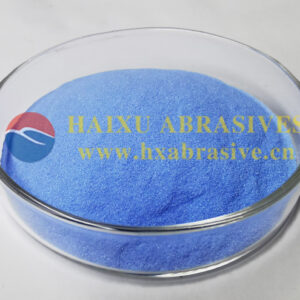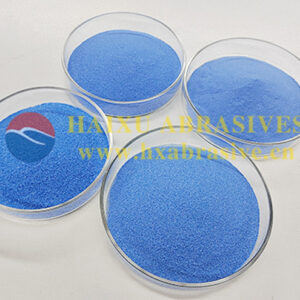Brown fused alumina sand blasting is a process of grinding abrasive to cut, polish and remove the surface of metal parts, wood, ceramics and other workpieces. It adopt brown fused aluminum oxide as blasting media. Complete dust removal, scratching, corrosion, oxidation and other work to form a bright or certain surface preparation. Brown fused alumina, also known as brown aluminum oxide, brown corundum and BFA, is a kind of fused fused synthetic corundum, which mainly accounts for 95% of alumina. Brown fused aluminum oxide powder or abrasive is an ideal material for sandblasting media. The macro abrasive F8-F220 produced by us is used for general surface preparation, sand blasting and shot peening, and the micro abrasive F 280-F2000 is used for precision polishing and abrasive.
There are several superior advantages of Brown fused alumina for sand blasting.
1. Hard material suitable for cutting (Mosh hardness 9)
2. Sturdy and durable materials (volume density between 1.4 and 2.2g/cm3)
3. High strength and durable cutting and polishing
Loss or chemical reaction of high-temperature materials resistant to high temperature (more than 2200 ℃), which may cause changes in the workpiece surface.
Sharp edges are ideal for removing scratches, corrosion, etc.
6. Repeat for 8-20 times according to different conditions.
Factors affecting the quality of brown fused alumina
1. Chemical content
The chemical content, especially the content of Al2O3 and TiO2, determines the hardness and strength. The higher the content of Al2O3, the higher the hardness and the better the high temperature resistance. A high-quality material usually contains about 95% Al2O3. Some customers also use 90%, 80% and other materials to reduce costs. Due to its hardness and strength, Grade A materials can be reused more times.
2. Size
For blasting purposes, brown fused alumina is usually produced according to FEPA standards. The Fepa standard defines a certain screening distribution, which determines the particles falling in each section within a certain diameter range. Therefore, it is also called particle distribution. Micro abrasive particles such as F 220 and F 400 are usually used for polishing or precision blasting, while macro abrasive particles are generally used for general blasting. The main sizes used are F24, F46, F60, etc., which can be reused and have certain loss and change in screening distribution.
3. Dust
In the production process, brown fused alumina is mixed with dust. Dust will contaminate the surface and reduce the number of times of preparation and use. In some cases, it may also cause injury to workers engaged in blasting work, or even cause explosion. Therefore, in production, we use certain equipment to eliminate dust. In some cases, the material is cleaned and dried with acid or water and then packaged in bags.
BFA and WFA for sandblasting applications:
BFA is the abbreviation of brown fused alumina (brown fused alumina, brown alumina, brown corundum), and WFA/WA is the abbreviation of white fused alumina (white fused alumina, white alumina, white corundum). Both abrasives are good media for sandblasting applications.
The Mohs hardness is 9.0 and 9.5 respectively, and the hardness of brown alumina and white alumina is 9.0 and 9.5 respectively. BFA and WFA are both ideal media for pollution-free sand blasting.
Brown alumina is more suitable for ordinary sandblasting due to its cost advantage. White alumina has high purity and white color. It is suitable for special sandblasting products with strong magnetism and high color requirements.
According to application experience, bfa f16-f46 is mainly used for ship hull and oil pipeline, because smooth surface is not the biggest concern of these products.
Precision products, including mobile enclosures, computer covers and some stainless steel equipment, have high requirements on the color, surface condition and further painting after sandblasting. Therefore, white aluminum oxide F60-F220 is mainly used in this application.





